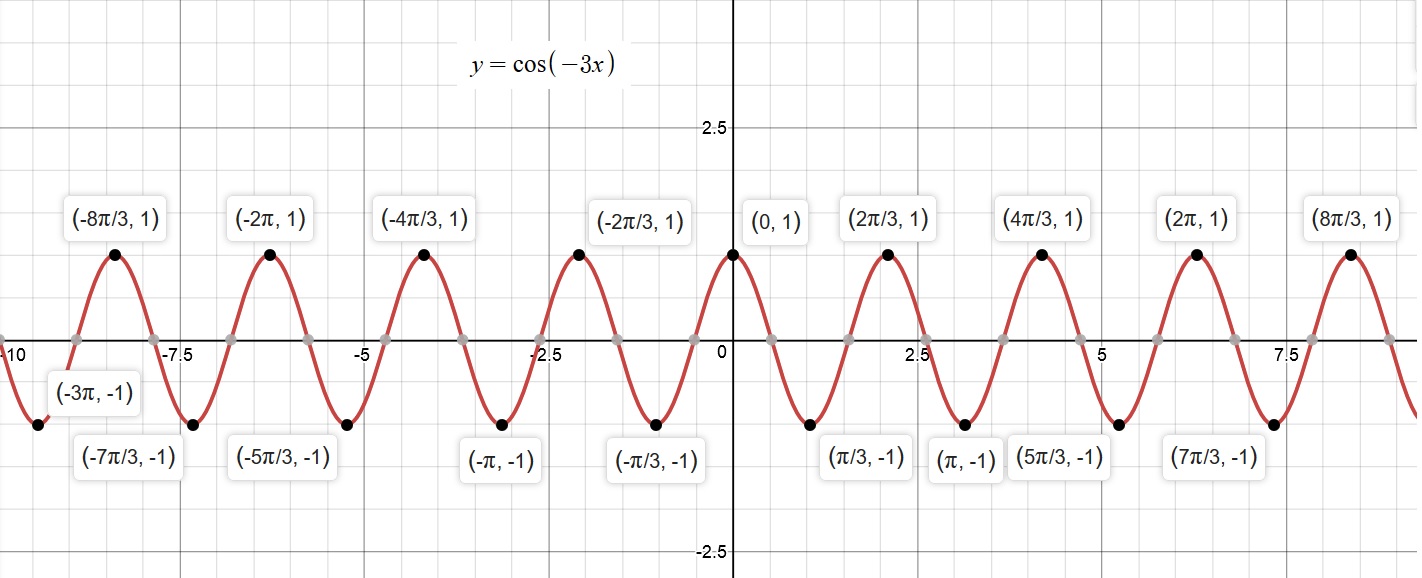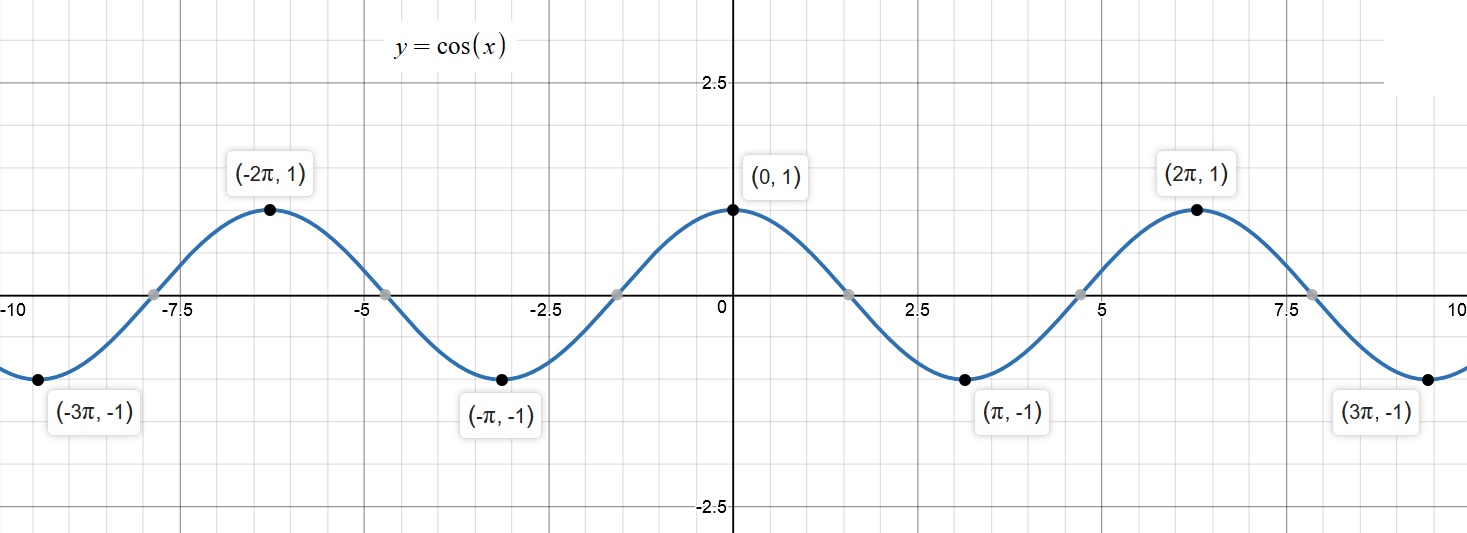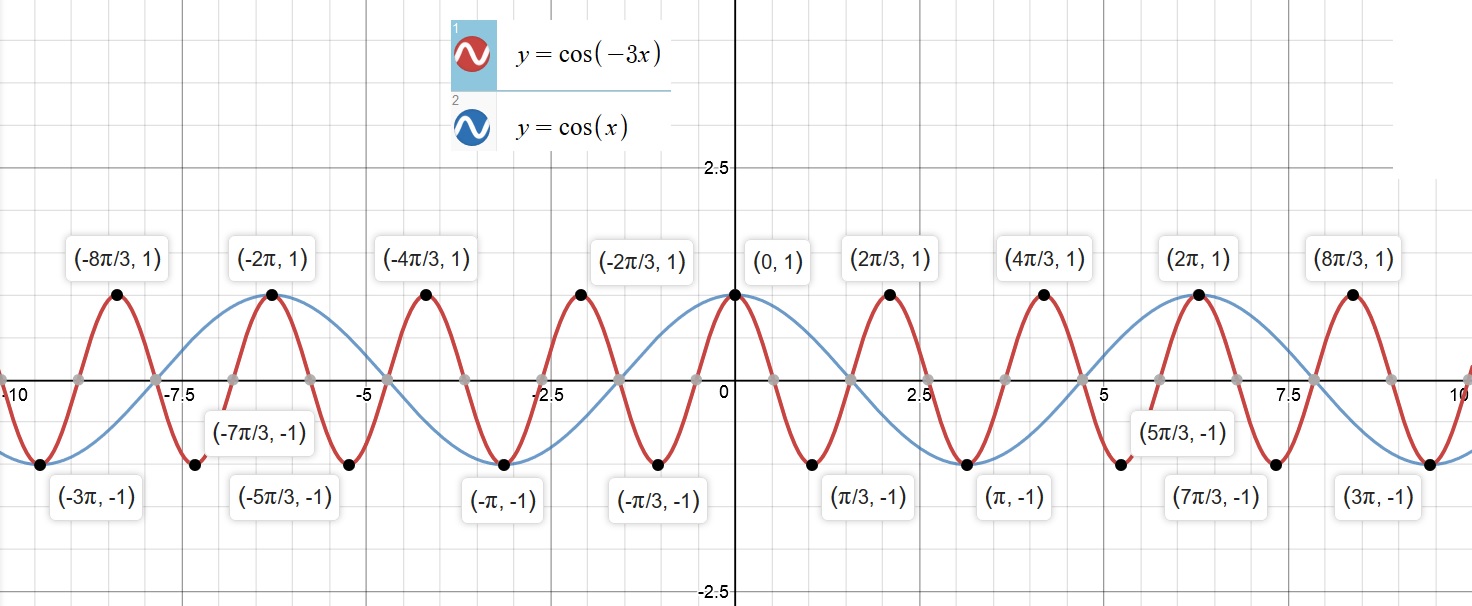What is the amplitude of y=cos(-3x) and how does the graph relate to y=cosx?
1 Answer
Exploring Graphs available:
Amplitude
Period
Explanation:
The Amplitude is the height from the center line to the peak or to the trough.
Or, we can measure the height from the highest to lowest points and divide that value by
A Periodic Function is a function that repeats its values in regular intervals or Periods.
We can observe this behavior in the graphs available with this solution.
Note that the trigonometric function Cos is a Periodic Function.
We are given the trigonometric functions
The General Form of the equation of the Cos function:
A represents the Vertical Stretch Factor and its absolute value is the Amplitude.
B is used to find the Period (P):
C, if given, indicates that we have a place shift BUT it is NOT equal to
The Place Shift is actually equal to
D represents Vertical Shift.
The trigonometric function available with us is
Observe the graph given below:

Observe the graph given below:

Combined Graphs of the trigonometric functions
are available below for establishing relationship:

How does the graph of
Exploring the graphs above, we note that:
Amplitude
Period
We also note the following:
the graph of
the domain of each function is

